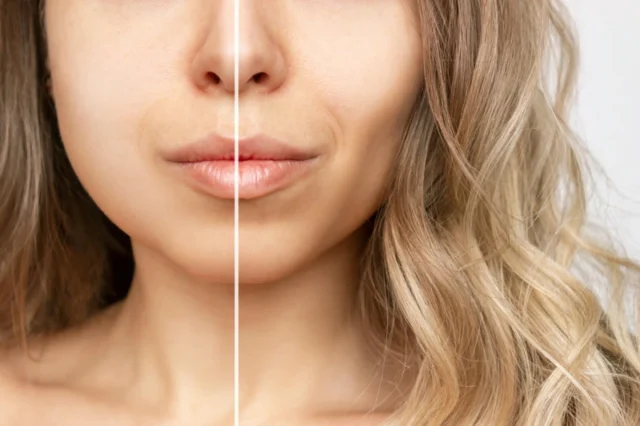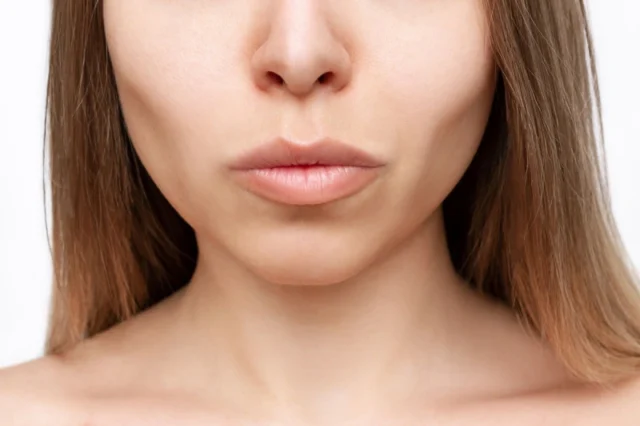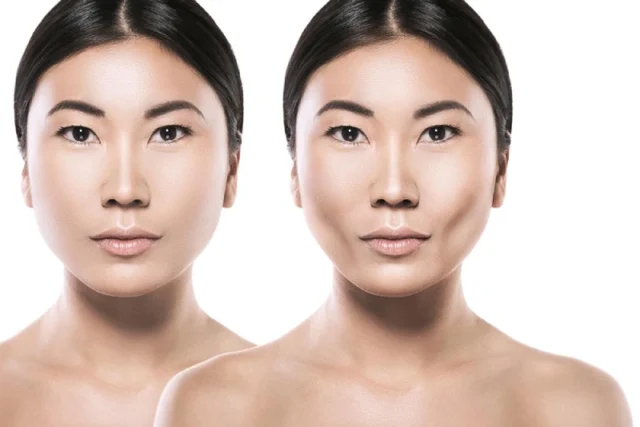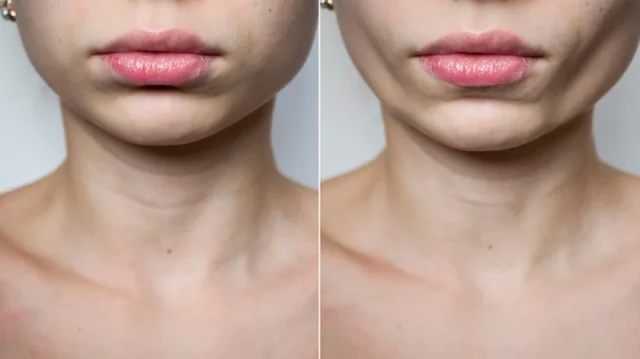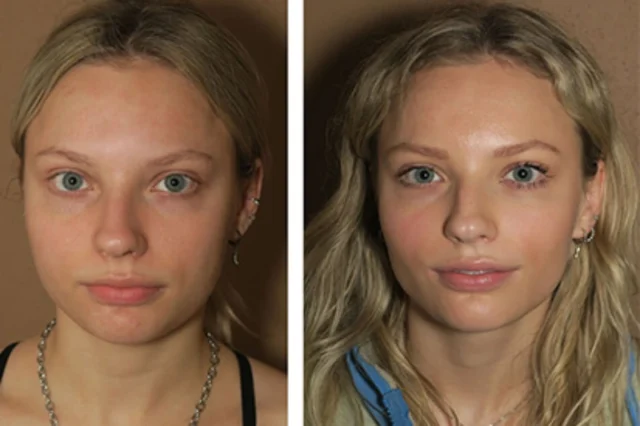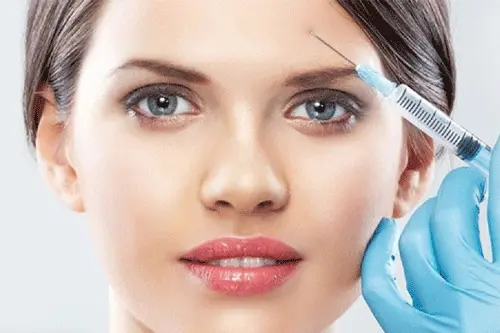In recent years, buccal fat removal has surged in popularity, captivating the attention of beauty enthusiasts and influencers alike. This cosmetic procedure, which involves the targeted removal of fat pads from the cheeks, promises a more sculpted facial contour and enhances the definition of the jawline. As celebrities flaunt their refined cheekbones on social media, many individuals are seeking ways to achieve a similar aesthetic. But what exactly is buccal fat removal, and why has it become a go-to trend in the beauty industry? This article delves into the intricacies of the procedure, exploring its benefits, the reasons behind its rise in popularity, and what potential candidates can expect during their journey. Whether you’re contemplating the procedure or simply intrigued by its benefits, understanding the ins and outs of buccal fat removal could give you valuable insights into the evolving world of cosmetic enhancements.
Understanding Buccal Fat Removal
Buccal fat removal is a cosmetic surgical procedure designed to enhance facial contour by removing the buccal fat pads located in the lower cheeks. These pads are naturally occurring pockets of fat that contribute to the fullness of the face. While some individuals appreciate the youthful, rounded appearance that buccal fat provides, others seek a more chiseled, defined look. The procedure involves making small incisions inside the mouth to access and remove the fat pads, resulting in a slimmer facial profile.
This procedure has been around for several decades but has gained traction in recent years thanks to advancements in surgical techniques and the growing influence of social media. With minimal scarring and relatively quick recovery times, buccal fat removal has become an attractive option for those looking to refine their appearance without undergoing more invasive surgeries. It’s a specialized technique often performed by cosmetic or plastic surgeons with expertise in facial anatomy.
The growing interest in buccal fat removal also stems from its ability to target a specific aesthetic concern—excess cheek fat—that many find difficult to address through diet and exercise alone. While overall weight loss can reduce fat in various parts of the body, the cheeks often retain their fullness, which can be frustrating for those striving for a more angular facial structure. Buccal fat removal offers a targeted solution, making it an appealing option for many.
The Anatomy of Buccal Fat
Understanding the anatomy of buccal fat is crucial to appreciating why and how the removal procedure works. Buccal fat pads are located between the facial muscles in the hollow area beneath the cheekbones. These fat pads are part of the deeper fat compartment of the face and are distinct from the superficial fat layers that lie closer to the skin’s surface. They play a role in the overall shape and fullness of the face, contributing to the rounded, youthful appearance often associated with childhood.
The size of buccal fat pads can vary significantly from person to person. Genetics, age, and overall body composition all influence their size and distribution. For some individuals, prominent buccal fat pads can create a chubby-cheeked look that persists into adulthood, regardless of weight changes. This can be a source of frustration for those who feel that their facial fullness does not reflect their overall fitness or aesthetic goals.
Interestingly, the buccal fat pads are not just involved in aesthetics; they also have functional roles. In infants, these pads aid in the suckling process, providing structural support to the cheeks during feeding. As we age, the pads can decrease in size naturally, contributing to the hollowed look often seen in older adults. However, for those with genetically larger buccal fat pads, the fullness may remain well into adulthood, prompting some to seek surgical intervention.
Reasons for the Growing Popularity of Buccal Fat Removal
Several factors contribute to the surging popularity of buccal fat removal. A significant driver is the pervasive influence of social media and celebrity culture. High-profile celebrities and influencers often showcase their sculpted, defined cheekbones, setting a standard of beauty that many aspire to achieve. This visibility has demystified cosmetic procedures and made them more accessible and desirable to the general public.
Another reason for the procedure’s popularity is the current trend towards minimally invasive cosmetic enhancements. People are increasingly looking for ways to refine their appearance without the downtime and risks associated with more invasive surgeries. Buccal fat removal fits this niche perfectly, offering noticeable results with relatively minimal intervention. The appeal of a quick recovery and the absence of visible scars make it an attractive option for many.
Additionally, the rise of “selfie culture” and the prevalence of virtual meetings have made people more conscious of their facial features. The desire to look one’s best on camera, combined with the ease of sharing before-and-after photos online, has fueled interest in procedures that promise significant improvements in facial aesthetics. As people become more aware of their appearance and the options available to enhance it, the demand for procedures like buccal fat removal continues to grow.
The Procedure: What to Expect
Buccal fat removal is typically performed under local anesthesia, though sedation or general anesthesia may be used in some cases. The procedure begins with the surgeon making small incisions inside the mouth, specifically in the inner cheek area. This approach ensures that there are no external scars, which is a significant advantage for those concerned about visible signs of surgery. Through these incisions, the surgeon carefully accesses the buccal fat pads and removes the desired amount of fat.
The entire process usually takes about an hour, depending on the complexity and the amount of fat being removed. Patients can expect some swelling and discomfort immediately following the procedure, but these symptoms are generally mild and can be managed with over-the-counter pain relievers and cold compresses. It’s essential to follow the surgeon’s post-operative care instructions to ensure optimal healing and results.
Most patients can return to their normal activities within a week, though strenuous exercise and activities that may cause facial trauma should be avoided for a few weeks. The final results of buccal fat removal become more apparent as the swelling subsides, usually within a few months. Patients typically notice a more contoured and sculpted appearance, with enhanced definition in the cheeks and jawline.
Risks and Considerations of Buccal Fat Removal
As with any surgical procedure, buccal fat removal comes with potential risks and considerations. It’s crucial for individuals to be aware of these before deciding to undergo the procedure. Common risks include infection, bleeding, and adverse reactions to anesthesia. While these complications are rare, they underscore the importance of choosing a qualified and experienced surgeon.
Another consideration is the potential for asymmetry or dissatisfaction with the results. Buccal fat removal is a permanent procedure, meaning that the removed fat will not return. Therefore, it’s essential to have realistic expectations and to communicate clearly with the surgeon about the desired outcome. In some cases, additional procedures may be necessary to achieve the optimal aesthetic result.
Patients should also consider the long-term effects of buccal fat removal. As the face naturally loses volume with age, removing too much buccal fat can lead to a gaunt or hollow appearance later in life. A skilled surgeon will take this into account and aim to remove just enough fat to achieve the desired contour without compromising the face’s natural aging process. This balance is key to ensuring that the results remain harmonious and flattering over time.
Recovery Process and Aftercare
The recovery process for buccal fat removal is generally straightforward, but it requires careful adherence to post-operative care instructions to ensure the best possible outcome. Immediately after the procedure, patients may experience swelling, bruising, and mild discomfort. These symptoms typically subside within a few days to a week. During this period, it’s essential to avoid any activities that could strain the facial muscles or disrupt the healing process.
Patients are usually advised to follow a soft or liquid diet for the first few days to minimize irritation to the surgical sites inside the mouth. Maintaining good oral hygiene is also crucial to prevent infection. This may include using a special mouth rinse and avoiding smoking or drinking through a straw, as these actions can increase the risk of complications. Regular follow-up appointments with the surgeon will help monitor the healing process and address any concerns that may arise.
Most individuals can return to work and normal activities within a week, although it’s recommended to avoid strenuous exercise and heavy lifting for at least two weeks. The final results of buccal fat removal become more apparent as the swelling fully resolves, typically within three to six months. During this time, patients will notice a gradual improvement in their facial contours, leading to a more defined and aesthetically pleasing appearance.
Buccal Fat Removal vs. Other Facial Contouring Procedures
While buccal fat removal is a popular option for achieving a slimmer facial profile, it’s not the only procedure available for facial contouring. Comparing buccal fat removal with other options can help individuals make an informed decision about the best approach for their needs. One common alternative is liposuction, which can be used to remove excess fat from the neck and jawline. However, liposuction is generally more invasive and involves a longer recovery period compared to buccal fat removal.
Dermal fillers are another popular option for enhancing facial contours. Unlike buccal fat removal, which reduces volume, fillers add volume to specific areas of the face to create a more balanced and youthful appearance. Fillers can be used to enhance the cheekbones, jawline, and other areas, offering a non-surgical alternative with immediate results. However, the effects of fillers are temporary, requiring regular maintenance treatments to sustain the desired look.
Thread lifts and facelifts are additional options for facial contouring. A thread lift involves inserting dissolvable threads under the skin to lift and tighten the facial tissues. This minimally invasive procedure offers subtle results with minimal downtime. A traditional facelift, on the other hand, is a more invasive surgical procedure that provides dramatic and long-lasting results. Each of these options has its own set of benefits and considerations, making it important for individuals to consult with a qualified surgeon to determine the best approach for their unique goals.
Celebrity Influence on Cosmetic Trends
The influence of celebrities on cosmetic trends cannot be overstated. High-profile figures in the entertainment industry often set beauty standards that many people aspire to emulate. When celebrities undergo cosmetic procedures and share their results, it can inspire a wave of interest in similar treatments. Buccal fat removal is no exception, with numerous celebrities rumored to have undergone the procedure to achieve their chiseled cheekbones and defined jawlines.
Social media platforms like Instagram and TikTok amplify this influence by providing a space for celebrities and influencers to share their cosmetic journeys. Before-and-after photos, candid discussions about procedures, and endorsements of surgeons contribute to the normalization and desirability of cosmetic enhancements. As a result, procedures like buccal fat removal become more mainstream and accessible to the general public.
The transparency of celebrities about their cosmetic procedures has also helped reduce the stigma associated with plastic surgery. By openly discussing their experiences, celebrities encourage their followers to consider cosmetic enhancements as a viable option for achieving their aesthetic goals. This shift in perception has played a significant role in the growing popularity of buccal fat removal and other cosmetic procedures.
Cost of Buccal Fat Removal: What to Know
The cost of buccal fat removal can vary widely depending on several factors, including the surgeon’s experience, the geographic location of the practice, and the complexity of the procedure. On average, the cost ranges from $2,000 to $5,000. It’s important to note that this price typically includes the surgeon’s fee, anesthesia, facility fees, and follow-up appointments. However, additional costs may arise for pre-operative consultations and post-operative care.
Insurance does not usually cover cosmetic procedures like buccal fat removal, as they are considered elective and not medically necessary. Therefore, patients should be prepared to pay out-of-pocket for the procedure. Many surgeons offer financing options or payment plans to make the cost more manageable. It’s essential to discuss all associated fees and payment options during the initial consultation to avoid any unexpected expenses.
When considering the cost of buccal fat removal, it’s crucial to prioritize the surgeon’s qualifications and experience over the price. Choosing a highly skilled and reputable surgeon can significantly impact the outcome and safety of the procedure. It’s worth investing in a surgeon who has a proven track record of successful buccal fat removal surgeries and who makes you feel comfortable and confident throughout the process.
Conclusion and Future of Buccal Fat Removal Trends
Buccal fat removal has emerged as a popular cosmetic procedure for individuals seeking a more sculpted and defined facial appearance. The trend is driven by the influence of celebrities, the rise of social media, and the desire for minimally invasive enhancements with noticeable results. Understanding the anatomy of buccal fat, the procedure itself, and the recovery process can help potential candidates make informed decisions about whether this surgery is right for them.
As the beauty industry continues to evolve, it’s likely that buccal fat removal will remain a sought-after procedure. Advances in surgical techniques and a growing emphasis on personalized aesthetic treatments will contribute to its ongoing popularity. Additionally, the increasing transparency of celebrities about their cosmetic journeys will continue to inspire individuals to explore options for enhancing their appearance.
Ultimately, the decision to undergo buccal fat removal should be made after careful consideration of the benefits, risks, and costs involved. Consulting with a qualified and experienced surgeon is essential to achieving the best possible outcome. As trends in cosmetic enhancements continue to develop, buccal fat removal is poised to remain a significant player in the quest for facial refinement and beauty.
